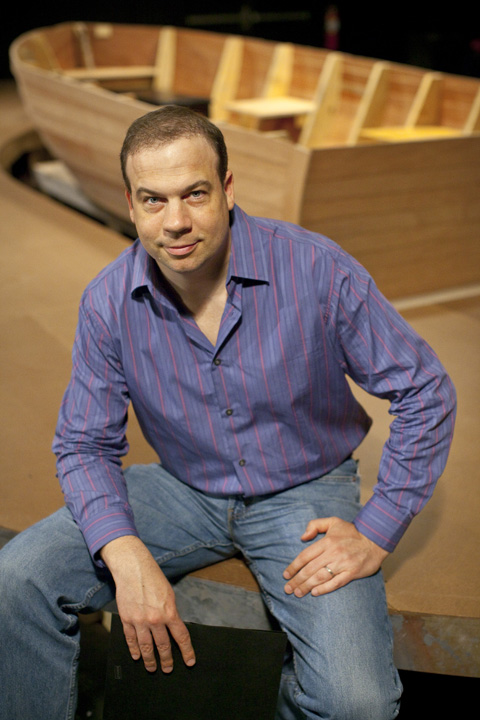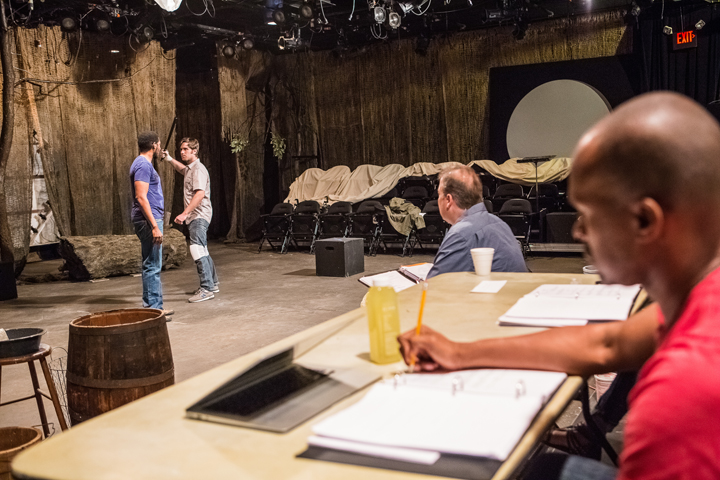Hidden History: How Premiere Stages’ "The People Before the Park" is Uncovering the Tragic Past of Central Park

From Bethesda Fountain to Strawberry Fields, up to 250,000 people a day come to marvel at the picturesque sights of New York’s Central Park. Since its completion in 1858, the 700 acres of land have become an international icon as one of Manhattan’s most beloved features, not to mention responsible for more than a billion dollars in revenue for the city each year. Yet beyond the rolling hills of Sheep Meadow and the mile-and-a-half running track surrounding the reservoir, there is a hidden history that most of the park’s tour guides gloss over.
Did you know that before Central Park was built, its land was occupied for over 30 years by a thriving community of African American, Irish and German property owners?
If your answer is no, you’re not alone.
“I feel like that's 98 percent of everyone I talk to,” says Keith Josef Adkins, the playwright of “The People Before the Park,” a new play debuting at Union’s Premiere Stages at Kean University from September 3 through September 20. Adkins’ drama tackles the story of Seneca Village, a community that was dismantled via eminent domain to make way for New York’s urban oasis in the mid 1850s. Winner of the theater company’s 2015 Premiere Stages Play Festival, which fast-tracks new works of social commentary to full productions during Premiere Stages’ season, the play aims to spread awareness of this infrequently-discussed moment in New York’s history.
“The dynamic of New York City is that it’s always changing, so it's easy to forget about events that were impactful,” Adkins says. He first learned about Seneca Village five years ago, and when New York’s Epic Theatre Ensemble commissioned him to write a short play to be used as an educational tool in New York City schools, he set his sights on the all-but-forgotten community that was situated on the land between where 82nd and 89th Streets and Seventh and Eighth Avenues would intersect. This project set Adkins down a road that would lead to an expanded theatrical piece—“The People Before the Park.”
Adkins began his research at the New-York Historical Society, which curated a rare exhibit on Seneca Village in 1997. His journey took him through New York State census records and archives at New York Public Library’s Schomburg Center for Research in Black Culture. Since little is known about the Seneca Village residents, Adkins learned all he could about the mid-19th-century African American and immigrant experience.
Armed with his new knowledge of the vanished community, Adkins returned to Central Park with new eyes by taking a guided tour of the Seneca Village section. “I was surprised that I was the one supplementing the tour,” Adkins says. “I was like, ‘Well, that wasn't actually what happened; what happened was this,’” Adkins said while laughing, recalling his frequent interruptions of the tour guide. “It was a very surface-level tour. It showed us the area, but the information, I felt, didn't have any context to it.”
“When I talk to people about the play, they say, ‘Oh yeah, I've heard about Seneca Village.’ But they really don't know the human side of it,” says John J. Wooten, producing artistic director of Premiere Stages and director of “The People Before the Park.” “Most of the plays we do explore topics that are important to and in the mindset of the community now. Even though’ The People Before the Park’ takes place in the 1850s, the issues of race relations, eminent domain and New York as a melting pot are all things that are very current.”
“What's happening in Harlem with gentrification and redevelopment is very similar to what happened with Seneca Village,” Adkins says, who is a resident of the neighborhood. “Whiteness moves into the area and there's a disregard for how important the area was for people. It's being dismantled and there's a disregard for the history and the importance of the community. People don't seem to care about it. I feel like the play speaks to that ongoing narrative.”
It’s likely that the historical truths of “The People Before the Park” will give audience members pause the next time they visit Central Park. Ignorance can be bliss, but what happens to people’s emotional attachments to a beloved landmark once they find out an entire community had to be demolished in order to build it?
“I think [the meaning of the play] surpasses the whole issue of Central Park. It's bigger than that,” Wooten says. “It's more about how are we going to develop as a country and respect each other, as well as what home and identity means and the impact of taking that away.”
Adkins also sees his play as more than a takedown of the New York greenspace. “I love Central Park, myself,” he says. “I don't want to take anything away from the greatness of Central Park, but it's important that we understand what the history is behind it. It didn’t just drop out of heaven!”
Paramount to Premiere Stages’ mission is bringing life to important works while their messages are relevant. Of approximately 440 entries, Adkins’ play was among four pieces selected for the Premiere Stages Play Festival last March, which received workshops, resulting in “The People Before the Park” advancing to a full production just six months later. Wooten is directing the play in a three-quarter-thrust staging, putting the audience on three sides of the set, which features rock formations and real trees, in order to immerse theatergoers in Adkins’ Seneca Village.
Adkins, 45, acknowledges the rarity of having a play mounted to a full production so quickly. “There needs to be more models like Premiere Stages, where [opportunity] is open to any playwright and there is a chance to be produced and workshopped,” Adkins says. “It doesn't have to be on Broadway or off-Broadway—great theater can happen anywhere.”
“I'm really excited for audiences to see a powerful story that they're still going to be thinking about the next day,” Wooten says. “They're not going think, ‘Wow, that was terrible what happened at Central Park.’ They're going to think about the lessons learned, the fact that America is a melting pot, and we all need to find a way to respect and honor each other.”




